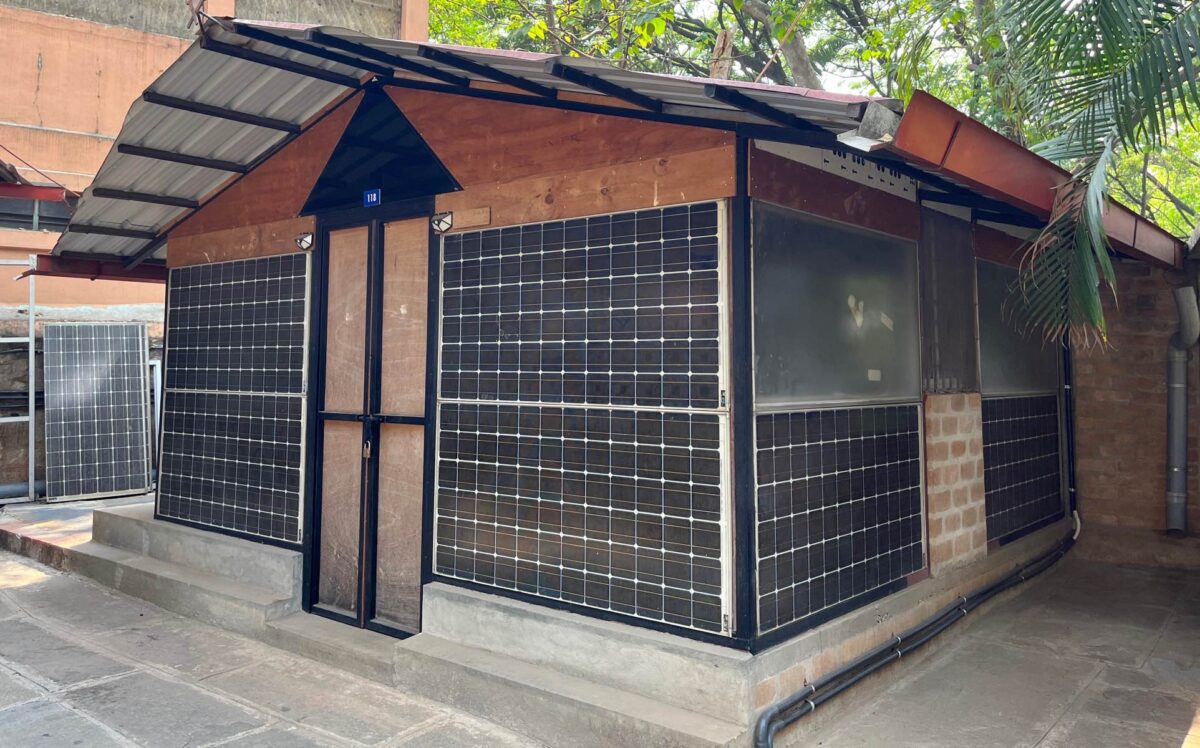Scientists at the Indian Institute of Science have proposed using end-of-life photovoltaic (EoL-PV) panels as low-cost, low-embodied energy-building material.
The research group stressed that solar module recycling is currently not viable economically, and said its approach consists of making conventional solar panels into BIPV products without any modifications.
“There is a significant reduction in the cost due to the wall, windows and roof in case of the adoption of EoL-PV modules,” the research’s lead author, Roshan R. Rao, told pv magazine. “The weight of these panels is much lower when compared to that of conventional 250 mm thick brick walls. The foundation for an EoL-PV structure would be much lighter and cheaper.”
The researchers constructed two different real buildings integrated with EoL-PV panels: a building-applied photovoltaic (BAPV) house using brick walls with plaster and RCC Roof, with the EoL-PV modules being attached to the structure; and a building-integrated photovoltaic (BIPV) house where the walls, roof, and windows are constructed using EoL-PV panels.
Their performance was then compared with that of a reference house built with traditional materials. Each unit housing unit measures 3 m × 3 m × 3 m and is based on the typical construction practice followed in India.
“We conducted climate responsiveness of these buildings through measurements and whole building simulations,” Rao said. “We are assessing the climate responsiveness of such buildings in different climate zones and possible interventions to improve the thermal performance of such buildings.”
Despite the theoretical end of their lifecycle, the reused solar panels are still assumed to provide a nominal power of 4 kWh/m2/day and to be used for providing the housing units with part of the power they need. Furthermore, the Indian team considered their net embodied energy, which is the initial embodied energy subtracted by the energy they generated till the end-of-life stage.
“The cost analysis has been done considering the actual cost of each building material by developing ‘Bill of Quantities’ for a building constructed conventionally in India and the structure of the EoL-PV panel integrated buildings,” added Rao.
Through their analysis, the academics found that the BIPV building has lower net embodied energy than the BAPV unit, as the latter requires additional material to fix the EoL-PV to the existing building. “The net embodied energy of the building is only because of the non-PV building elements,” note the researchers.
Utilising Energy Payback Time (EPBT) analysis, they ascertained that payback times for the BIPV and BAPV units using 15-year-old solar modules would be 3.42 years and 5.5 years, respectively, with the annual degradation rate of the modules representing the most significant factor influencing these values. “The benefit of upcycling an EoL-PV panel from the Net Embodied Energy perspective depends on the age of the EoL-PV panel,” they noted.
The group presented its findings in the paper “Examining the use of End-of-Life (EoL) PV panels in housing and sustainability,” published in Solar Energy.
“With our approach, EoL-PV would no longer be seen as a liability to either manufacturers or users,” Rao said. “PV manufacturers may consider re-design/modify the frames with an intent to allow for such application in the end-of-life stage.”
This content is protected by copyright and may not be reused. If you want to cooperate with us and would like to reuse some of our content, please contact: editors@pv-magazine.com.









By submitting this form you agree to pv magazine using your data for the purposes of publishing your comment.
Your personal data will only be disclosed or otherwise transmitted to third parties for the purposes of spam filtering or if this is necessary for technical maintenance of the website. Any other transfer to third parties will not take place unless this is justified on the basis of applicable data protection regulations or if pv magazine is legally obliged to do so.
You may revoke this consent at any time with effect for the future, in which case your personal data will be deleted immediately. Otherwise, your data will be deleted if pv magazine has processed your request or the purpose of data storage is fulfilled.
Further information on data privacy can be found in our Data Protection Policy.